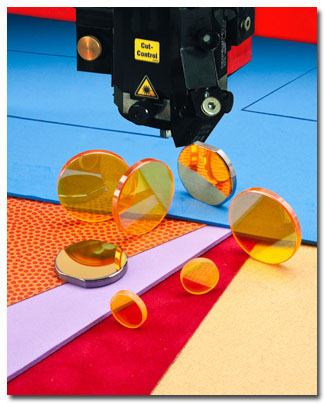After the latest news about cotton, and its rollercoaster business, it’s time to come back to ITMA
2011 in Barcelona. This week, the Rupp Report will have a look at Fong’s Industries Co. Ltd. The
Hong Kong-based group with its daughter companies in Europe experienced an exciting year with a
partially new ownership. The Rupp Report informed its readers already in July 2011 about the
changes
(See ”
The
Rupp Report: The Fong’s Group: Stronger Than Ever,” www.
TextileWorld.com, July 12, 2011).
In June 2011, the deal between Fong’s and China Hi-Tech Group Co. Ltd. (CHTC) was executed.
Fong’s staff pointed out that the action does not mean that Fong’s has been taken over, but rather
that Fong’s has a new major shareholder. At the moment, CHTC holds some 63 percent of Fong’s
shares. But, going back to ITMA 2011 in Barcelona, the Rupp Report had the opportunity to talk to
Thomas Archner, managing director of Germany-based Fong’s Europe GmbH.
Too Many Exhibitions Means Too Many Expenses
Archner said that he’s convinced that an ITMA in Europe still makes a lot sense. On the
other hand, “there are too many exhibitions in Asia,” he said. “For the first time at the last
ShanghaiTex, we did not exhibit any machinery; it’s getting much too expensive with all these
events. An ITMA Asia every four years, alternatively to Europe, would be good enough.”
The Fong’s Group, including its brands Fong’s, Then and Goller, welcomed mainly visitors
from India, Bangladesh, Turkey and Italy, but also a lot of people from Switzerland and Germany;
and reported some unexpected sales. “On top of that,” Archner added, “Brazil was prominently
present with many visitors, as were Peru and other Latin American countries. The visitor’s
frequency and the quality of the people was very good, we’ve only welcomed important decision
makers.”
“We are very happy with this ITMA,” Archner said. “Our expectations are entirely fulfilled.
We’ve sold a lot of machines. I think, after this event, there is no doubt about the importance of
ITMA in Europe.
Europe And Asia
Is the European market still important for the Fong’s Group? “Absolutely,” Archner
mentioned, “more than ever. Of course, from a volume standpoint, Asia is much bigger; however, with
our high-class portfolio the European markets still play an important part in our sales volume. On
the other hand, we recognize that China and India are still the most important sales markets, and
on top of that, China is heavily moving towards better-quality products.” According to Archner, the
Fong’s Group is not that much affected by the current volatilities of the international currencies
thanks to its global setup.
Automation is the big issue Archner mentioned — especially Fong’s TEC Series, but also the
further development of the Jumboflow dyeing machine. The top runner was the L-shape version of the
Then Airflow® Lotus. This model can handle fabrics with up to 50-percent spandex. The liquor ratio
is 1:3. “We have sold three machines of the Then Airflow Lotus L-shape version,” he mentioned with
pride.
Markets
Archner sees the current market situation in a positive way: “In general, we are quite
optimistic about the future. However, in recent times it is more and more difficult to predict the
markets. For our products, we see a more reluctant Asian market. On the other hand, Europe and
Latin America are developing much better than we expected.”
Confirmed Positive ITMA
To confirm the impression of ITMA, the Rupp Report had the chance to speak to Roland Adrion,
regional sales director of Fong’s Europe a few days ago in Germany. He confirmed entirely the
successful ITMA in Barcelona and the sales success: “The positive trend at ITMA was confirmed in
the past few months. We are enjoying a considerable order income for Fong’s, Then and Goller
machinery. We are fully working on the follow-up from ITMA Barcelona. Latin America in particular
shows an excellent development in orders and sales, mainly for Goller machinery in Brazil. The
operating grade is very good, and our order books are full.”
The Future
Going back to Barcelona for an outlook, for the year 2012, Archner is optimistic as well:
“We think that the markets will remain steady, if the basic conditions will not change too much.”
And how does Archner judge the development in the finishing sector over the next few years?
“Well, the answer is quite clear: With the increasing environmental consciousness of the world
population, textile machinery in general, and finishing machinery in particular, must be designed
accordingly with less consumption of energy, water and chemicals; not to mention less waste water.
Sustainability is the key word for this and the next generation of competitive and up-to-date-
machinery. Innovation is not a marketing or sales argument anymore, but a necessity to remain in
business.” And, yes, The Fong’s Group will be present in Shanghai at ITMA Asia + CITME 2012 and in
Milan at ITMA 2015.
December 27, 2011





